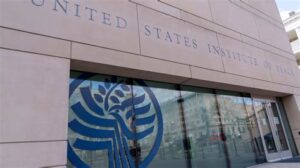Is the US Government Manipulating Hurricanes?

In recent years, discussions around human influence on natural weather patterns have expanded beyond the realm of climate change to include the concept of direct weather modification. Governments around the world, as well as private entities, have invested in technologies that can alter certain weather conditions, sparking curiosity about the potential consequences. One of the more controversial areas of discussion involves whether governments could theoretically intensify extreme weather events, like hurricanes.
Weather Modification: How it Works
Weather modification techniques, often referred to as geoengineering, have been in development for decades. One of the most well-known methods is cloud seeding, a process used to stimulate precipitation. This is achieved by dispersing substances such as silver iodide or salt particles into clouds, encouraging the formation of rain or snow. Cloud seeding is commonly employed in agriculture to alleviate drought conditions and ensure water supply in areas where rainfall is scarce.
Other weather-modifying technologies include:
- Hail suppression: Targeting thunderstorms to reduce the size and intensity of hail.
- Fog dispersal: Techniques aimed at clearing fog around airports or highways to improve visibility.
While these techniques are fairly localized and well-documented, they have raised ethical concerns, particularly about their potential unintended side effects on surrounding areas and ecosystems.
The Potential to Intensify Hurricanes
Hurricanes are powerful natural phenomena, driven by complex atmospheric and oceanic interactions. They form over warm ocean waters, where the combination of heat and moisture causes massive upward air movements, leading to the formation of powerful wind systems.
The idea that governments could intensify hurricanes has primarily been explored in conspiracy theories, but it also raises valid scientific questions. Can human intervention directly influence a storm of this magnitude? Theoretically, there are ways in which the intensity of hurricanes might be altered or influenced:
- Temperature Manipulation: Since hurricanes derive their energy from warm ocean waters, any modification to sea surface temperatures could potentially influence the storm’s strength. There are speculative discussions about whether large-scale geoengineering techniques, such as solar radiation management (SRM), could be used to cool parts of the ocean, thereby weakening hurricanes. Conversely, accidental or deliberate warming of these waters might have the opposite effect, making storms stronger.
- Atmospheric Changes: Hurricanes are influenced by air pressure systems, wind shear, and moisture levels. In theory, interventions in the atmosphere, such as large-scale cloud seeding or the manipulation of jet streams, could affect hurricane formation or intensity. However, this remains speculative and highly complex, as the chaotic nature of atmospheric dynamics makes it difficult to predict the outcomes of such interventions.
- Energy Redirection: Some have hypothesized that the energy fueling a hurricane could be disrupted or redirected, potentially to weaken it or control its path. However, this concept is largely in the realm of science fiction at present, and even small-scale attempts at weather modification have shown unpredictable results.
Ethical and Environmental Considerations
The idea of intentionally manipulating hurricanes—or any weather system—raises significant ethical and environmental concerns. Hurricanes, despite their destructive power, play a vital role in the global climate system. They help redistribute heat from the tropics to the poles, maintaining a balance in the Earth’s atmospheric system. Interfering with these natural processes could have long-term consequences that may be difficult to foresee.
Furthermore, the potential militarization of weather modification technologies is a subject of concern. In 1977, the Environmental Modification Convention (ENMOD) was established, banning the use of weather modification techniques for hostile purposes. Despite this, the fear remains that governments or non-state actors could one day use these technologies to manipulate the weather for strategic gain, potentially weaponizing hurricanes or other extreme events.
Conclusion: Can Governments Intensify Hurricanes?
Currently, no credible scientific evidence supports the idea that any government has the ability to intentionally intensify hurricanes. While weather modification technologies are advancing, they remain far from capable of controlling large-scale natural phenomena like hurricanes. That said, the rapid pace of geoengineering research raises important questions about the limits of human intervention in natural systems.
As discussions about climate manipulation and weather modification continue to grow, so too will the debates about their ethical, environmental, and geopolitical implications. Understanding how human actions can affect the weather—both intentionally and unintentionally—will be crucial as we move forward into an era of increasing technological capability and environmental uncertainty.
The Sirius Report has documented 100 US patents related to weather manipulation:
- 0462795 – July 16, 1891 – Method Of Producing Rain-Fall
- 1103490 – August 6, 1913 – Rain-Maker
- 1225521 – September 4, 1915 – Protecting From Poisonous Gas In Warfare
- 1338343 – April 27, 1920 – Process And Apparatus For The Production of Intense Artificial Clouds, Fogs, or Mists
- 1619183 – March 1, 1927 – Process of Producing Smoke Clouds From Moving Aircraft
- 1665267 – April 10, 1928 – Process of Producing Artificial Fogs
- 1892132 – December 27, 1932 – Atomizing Attachment For Airplane Engine Exhausts
- 1928963 – October 3, 1933 – Electrical System And Method
- 1957075 – May 1, 1934 – Airplane Spray Equipment
- 2097581 – November 2, 1937 – Electric Stream Generator – Referenced in 3990987
- 2409201 – October 15, 1946 – Smoke Producing Mixture
- 2476171 – July 18, 1945 – Smoke Screen Generator
- 2480967 – September 6, 1949 – Aerial Discharge Device
- 2550324 – April 24, 1951 – Process For Controlling Weather
- 2582678 – June 15, 1952 – Material Disseminating Apparatus For Airplanes
- 2614083 – October 14, 1952 – Metal Chloride Screening Smoke Mixture
- 2633455 – March 31, 1953 – Smoke Generator
- 2688069 – August 31, 1954 – Steam Generator – Referenced in 3990987
- 2721495 – October 25, 1955 – Method And Apparatus For Detecting Minute Crystal Forming Particles Suspended in a Gaseous Atmosphere
- 2730402 – January 10, 1956 – Controllable Dispersal Device
- 2801322 – July 30, 1957 – Decomposition Chamber for Monopropellant Fuel – Referenced in 3990987
- 2881335 – April 7, 1959 – Generation of Electrical Fields
- 2908442 – October 13, 1959 – Method For Dispersing Natural Atmospheric Fogs And Clouds
- 2986360 – May 30, 1962 – Aerial Insecticide Dusting Device
- 2963975 – December 13, 1960 – Cloud Seeding Carbon Dioxide Bullet
- 3126155 – March 24, 1964 – Silver Iodide Cloud Seeding Generator
- 3127107 – March 31, 1964 – Generation of Ice-Nucleating Crystals
- 3131131 – April 28, 1964 – Electrostatic Mixing in Microbial Conversions
- 3174150 – March 16, 1965 – Self-Focusing Antenna System
- 3234357 – February 8, 1966 – Electrically Heated Smoke Producing Device
- 3274035 – September 20, 1966 – Metallic Composition For Production of Hydroscopic Smoke
- 3300721 – January 24, 1967 – Means For Communication Through a Layer of Ionized Gases
- 3313487 – April 11, 1967 – Cloud Seeding Apparatus
- 3338476 – August 29, 1967 – Heating Device For Use With Aerosol Containers
- 3410489 – November 12, 1968 – Automatically Adjustable Airfoil Spray System With Pump
- 3429507 – February 25, 1969 – Rainmaker
- 3432208 – November 7, 1967 – Fluidized Particle Dispenser
- 3441214 – April 29, 1969 – Method And Apparatus For Seeding Clouds
- 3445844 – May 20, 1969 – Trapped Electromagnetic Radiation Communications System
- 3456880 – July 22, 1969 – Method Of Producing Precipitation From The Atmosphere
- 3518670 June 30, 1970 – Artificial Ion Cloud
- 3534906 – October 20, 1970 – Control of Atmospheric Particles
- 3545677 – December 8, 1970 – Method of Cloud Seeding
- 3564253 – February 16, 1971 – System And Method For Irradiation Of Planet Surface Areas
- 3587966 – June 28, 1971 – Freezing Nucleation
- 3601312 – August 24, 1971 – Methods of Increasing The Likelihood oF Precipitation By The Artificial Introduction Of Sea Water Vapor Into The Atmosphere Winward Of An Air Lift Region
- 3608810 – September 28, 1971 – Methods of Treating Atmospheric Conditions
- 3608820– September 20, 1971 – Treatment of Atmospheric Conditions by Intermittent Dispensing of Materials Therein
- 3613992 – October 19, 1971 – Weather Modification Method
- 3630950 – December 28, 1971 – Combustible Compositions For Generating Aerosols, Particularly Suitable For Cloud Modification And Weather Control And Aerosolization Process
- USRE29142 – May 22, 1973 – Combustible compositions for generating aerosols, particularly suitable for cloud modification and weather control and aerosolization process
- 3659785 – December 8, 1971 – Weather Modification Utilizing Microencapsulated Material
- 3666176 – March 3, 1972 – Solar Temperature Inversion Device
- 3677840 – July 18, 1972 – Pyrotechnics Comprising Oxide of Silver For Weather Modification Use
- 3722183 – March 27, 1973 – Device For Clearing Impurities From The Atmosphere
- 3769107 – October 30, 1973 – Pyrotechnic Composition For Generating Lead Based Smoke
- 3784099 – January 8, 1974 – Air Pollution Control Method
- 3785557 – January 15, 1974 – Cloud Seeding System
- 3795626 – March 5, 1974 – Weather Modification Process
- 3808595 – April 30, 1974 – Chaff Dispensing System
- 3813875 – June 4, 1974 – Rocket Having Barium Release System to Create Ion Clouds In The Upper Atmosphere
- 3835059 – September 10, 1974 – Methods of Generating Ice Nuclei Smoke Particles For Weather Modification And Apparatus Therefore
- 3835293 – September 10, 1974 – Electrical Heating Apparatus For Generating Super Heated Vapors
- 3877642 – April 15, 1975 – Freezing Nucleant
- 3882393 – May 6, 1975 – Communications System Utilizing Modulation of The Characteristic Polarization of The Ionosphere
- 3896993 – July 29, 1975 – Process For Local Modification of Fog And Clouds For Triggering Their Precipitation And For Hindering The Development of Hail Producing Clouds
- 3899129 – August 12, 1975 – Apparatus for generating ice nuclei smoke particles for weather modification
- 3899144 – August 12, 1975 – Powder contrail generation
- 3940059 – February 24, 1976 – Method For Fog Dispersion
- 3940060 – February 24, 1976 – Vortex Ring Generator
- 3990987 – November 9, 1976 – Smoke generator
- 3992628 – November 16, 1976 – Countermeasure system for laser radiation
- 3994437 – November 30, 1976 – Broadcast dissemination of trace quantities of biologically active chemicals
- 4042196 – August 16, 1977 – Method and apparatus for triggering a substantial change in earth characteristics and measuring earth changes
- RE29,142 – February 22, 1977 – Combustible compositions for generating aerosols, particularly suitable for cloud modification and weather control and aerosolization process
- 4035726 – July 12, 1977 – Method of controlling and/or improving high-latitude and other communications or radio wave surveillance systems by partial control of radio wave et al
- 4096005 – June 20, 1978 – Pyrotechnic Cloud Seeding Composition
- 4129252 – December 12, 1978 – Method and apparatus for production of seeding materials
- 4141274 – February 27, 1979 – Weather modification automatic cartridge dispenser
- 4167008 – September 4, 1979 – Fluid bed chaff dispenser
- 4347284 – August 31, 1982 – White cover sheet material capable of reflecting ultraviolet rays
- 4362271 – December 7, 1982 – Procedure for the artificial modification of atmospheric precipitation as well as compounds with a dimethyl sulfoxide base for use in carrying out said procedure
- 4402480 – September 6, 1983 – Atmosphere modification satellite
- 4412654 – November 1, 1983 – Laminar microjet atomizer and method of aerial spraying of liquids
- 4415265 – November 15, 1983 – Method and apparatus for aerosol particle absorption spectroscopy
- 4470544 – September 11, 1984 – Method of and Means for weather modification
- 4475927 – October 9, 1984 – Bipolar Fog Abatement System
- 4600147 – July 15, 1986 – Liquid propane generator for cloud seeding apparatus
- 4633714 – January 6, 1987 – Aerosol particle charge and size analyzer
- 4643355 – February 17, 1987 – Method and apparatus for modification of climatic conditions
- 4653690 – March 31, 1987 – Method of producing cumulus clouds
- 4684063 – August 4, 1987 – Particulates generation and removal
- 4686605 – August 11, 1987 – HAARP Patent / EASTLUND PATENT – Method and apparatus for altering a region in the earth’s atmosphere, ionosphere, and/or magnetosphere
- 4704942 – November 10, 1987 – Charged Aerosol
- 4712155 – December 8, 1987 – Method and apparatus for creating an artificial electron cyclotron heating region of plasma
- 4744919 – May 17, 1988 – Method of dispersing particulate aerosol tracer
- 4766725 – August 30, 1988 – Method of suppressing formation of contrails and solution therefor
- 4829838 – May 16, 1989 – Method and apparatus for the measurement of the size of particles entrained in a gas
- 4836086 – June 6, 1989 – Apparatus and method for the mixing and diffusion of warm and cold air for dissolving fog
- 4873928 – October 17, 1989 – Nuclear-sized explosions without radiation
- 4948257 – August 14, 1990 – Laser optical measuring device and method for stabilizing fringe pattern spacing
- 1338343– August 14, 1990 – Process and Apparatus for the production of intense artificial Fog
- 4999637 – March 12, 1991 – Creation of artificial ionization clouds above the earth
- 5003186 – March 26, 1991 – Stratospheric Welsbach seeding for reduction of global warming
- 5005355 – April 9, 1991 – Method of suppressing formation of contrails and solution therefor
- 5038664 – August 13, 1991 – Method for producing a shell of relativistic particles at an altitude above the earths surface
- 5041760 – August 20, 1991 – Method and apparatus for generating and utilizing a compound plasma configuration
- 5041834 – August 20, 1991 – Artificial ionospheric mirror composed of a plasma layer which can be tilted
- 5056357 – October 15, 1991- Acoustic method for measuring properties of a mobile medium
- 5059909 – October 22, 1991 – Determination of particle size and electrical charge
- 5104069 – April 14, 1992 – Apparatus and method for ejecting matter from an aircraft
- 5110502 – May 5, 1992 – Method of suppressing formation of contrails and solution therefor
- 5156802 – October 20, 1992 – Inspection of fuel particles with acoustics
- 5174498 – December 29, 1992 – Cloud Seeding
- 5148173 – September 15, 1992 – Millimeter wave screening cloud and method
- 5242820 – September 7, 1993 – Army Mycoplasma Patent Patent
- 5245290 – September 14, 1993 – Device for determining the size and charge of colloidal particles by measuring electroacoustic effect
- 5286979 – February 15, 1994 – Process for absorbing ultraviolet radiation using dispersed melanin
- 5296910 – March 22, 1994 – Method and apparatus for particle analysis
- 5327222 – July 5, 1994 – Displacement information detecting apparatus
- 5357865 – October 25, 1994 – Method of cloud seeding
- 5360162 – November 1, 1994 – Method and composition for precipitation of atmospheric water
- 5383024 – January 17, 1995 – Optical wet steam monitor
- 5425413 – June 20, 1995 – Method to hinder the formation and to break-up overhead atmospheric inversions, enhance ground level air circulation and improve urban air quality
- 5434667 – July 18, 1995 – Characterization of particles by modulated dynamic light scattering
- 5441200 – August 15, 1995 – Tropical cyclone disruption
- 5486900 – January 23, 1996 – Measuring device for amount of charge of toner and image forming apparatus having the measuring device
- 5556029 – September 17, 1996 – Method of hydrometeor dissipation (clouds)
- 5628455 – May 13, 1997 – Method and apparatus for modification of supercooled fog
- 5631414 – May 20, 1997 – Method and device for remote diagnostics of ocean-atmosphere system state
- 5639441 – June 17, 1997 – Methods for fine particle formation
- 5762298 – June 9, 1998 – Use of artificial satellites in earth orbits adaptively to modify the effect that solar radiation would otherwise have on earth’s weather
- 5800481 – September 1, 1998 – Thermal excitation of sensory resonances
- 5912396 – June 15, 1999 – System and method for remediation of selected atmospheric conditions
- 5922976 – July 13, 1999 – Method of measuring aerosol particles using automated mobility-classified aerosol detector
- 5949001 – September 7, 1999 – Method for aerodynamic particle size analysis
- 5984239 – November 16, 1999 – Weather modification by artificial satellite
- 6025402 – February 15, 2000 – Chemical composition for effectuating a reduction of visibility obscuration, and a detoxifixation of fumes and chemical fogs in spaces of fire origin
- 6030506 – February 29, 2000 – Preparation of independently generated highly reactive chemical species
- 6034073 – March 7, 2000 – Solvent detergent emulsions having antiviral activity
- 6045089 – April 4, 2000 – Solar-powered airplane
- 6056203 – May 2, 2000 – Method and apparatus for modifying supercooled clouds
- 6110590 – August 29, 2000 – Synthetically spun silk nanofibers and a process for making the same
- 6263744 – July 24, 2001 – Automated mobility-classified-aerosol detector
- 6281972 – August 28, 2001 – Method and apparatus for measuring particle-size distribution
- 6315213 – November 13, 2001 – Method of modifying weather
- 6382526 – May 7, 2002 – Process and apparatus for the production of nanofibers
- 6408704 – June 25, 2002 – Aerodynamic particle size analysis method and apparatus
- 6412416 – July 2, 2002 – Propellant-based aerosol generation devices and method
- 6520425 – February 18, 2003 – Process and apparatus for the production of nanofibers
- 6539812 – April 1, 2003 – System for measuring the flow-rate of a gas by means of ultrasound
- 6553849 – April 29, 2003 – Electrodynamic particle size analyzer
- 6569393 – May 27, 2003 – Method And Device For Cleaning The Atmosphere
- 0056705 A1 – March 17, 2005 – Weather Modification by Royal Rainmaking Technology
- 6890497 – May 10, 2005 – Method For Extracting And Sequestering Carbon Dioxide
- 7965488 – November 9, 2007 – Methods Of Removing Aerosols From The Atmosphere
- 8048309 – August 28, 2008 – Seawater-Based Carbon Dioxide Disposal
- 8012453 – October 27, 2008 – Carbon Sequestration And Production Of Hydrogen And Hydride
- 7645326 – January 12, 2010 – RFID environmental manipulation
- 7655193 – February 2, 2010 – Apparatus For Extracting And Sequestering Carbon Dioxide
- 8079545 – December 20, 2011 – Ground based Manipulation and Control of Aerial Vehicle during nonflying operations
- 0117003 – October 5, 2012 – Geoengineering Method Of Business Using Carbon Counterbalance Credits – alternate link
- 8373962 – February 12, 2013 – Charged seed cloud as a method for increasing particle collisions and for scavenging airborne biological agents and other contaminants





